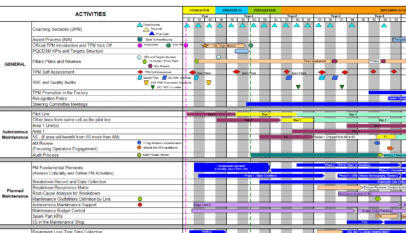Do not let what you can not do, prevent you from doing what you can do…
John Wooden, former basketball coach at UCLA
Introduction:
Creating a culture of continuous improvement is essential for any organization that wants to stay competitive and improve performance. Continuous improvement is a way of thinking and working that involves everyone in the organization, from top management to front-line employees. It is a process of identifying opportunities for improvement, making changes, and measuring the results. This post will share seven ways to create a continuous improvement culture.
- Communicate the Vision
The first step in creating a continuous improvement culture is communicating the vision. This means ensuring everyone in the organization understands the benefits of continuous improvement and how it aligns with its overall goals and objectives. Communicating the vision should be an ongoing process, not a one-time event.
- Lead by Example
Leadership is critical to creating a culture of continuous improvement. Leaders must set an example by actively participating in improvement activities and encouraging others to do the same. They also need to recognize and reward employees for their contributions to improvement.
- Empower Employees
Empowering employees is another key aspect of creating a culture of continuous improvement. This means giving employees the authority and resources they need to identify and solve problems. It also means creating an environment where employees feel comfortable suggesting and implementing improvements.
- Encourage Collaboration
Collaboration is essential for creating a culture of continuous improvement. This means encouraging employees to work together to identify and solve problems across functions and levels. It also means fostering a culture of open communication and trust.
- Use Data and Metrics
Data and metrics are important tools for creating a culture of continuous improvement. This means regularly collecting data on key performance indicators and using that data to identify opportunities for improvement. It also means setting targets and measuring progress towards those targets.
- Provide Training and Development
Providing training and development is another key aspect of creating a culture of continuous improvement. This means providing employees with the skills and knowledge they need to identify and solve problems. It also means creating opportunities for employees to learn from others.
- Recognize and Reward Improvement
Recognizing and rewarding improvement is important for creating a culture of continuous improvement. This means recognizing and rewarding employees for their contributions to improvement, regardless of their level or function. It also means creating a culture where improvement is valued and celebrated.
Conclusion:
Creating a culture of continuous improvement is essential for any organization that wants to stay competitive and improve performance. By communicating the vision, leading by example, empowering employees, encouraging collaboration, using data and metrics, providing training and development, and recognizing and rewarding improvement, you can create a culture that supports continuous improvement and drives performance.


















